The Diamond Studded History of the Festival of Lights
Natural diamonds are inextricably tied back to the tales and battles that led to the five day grandeur of Diwali.
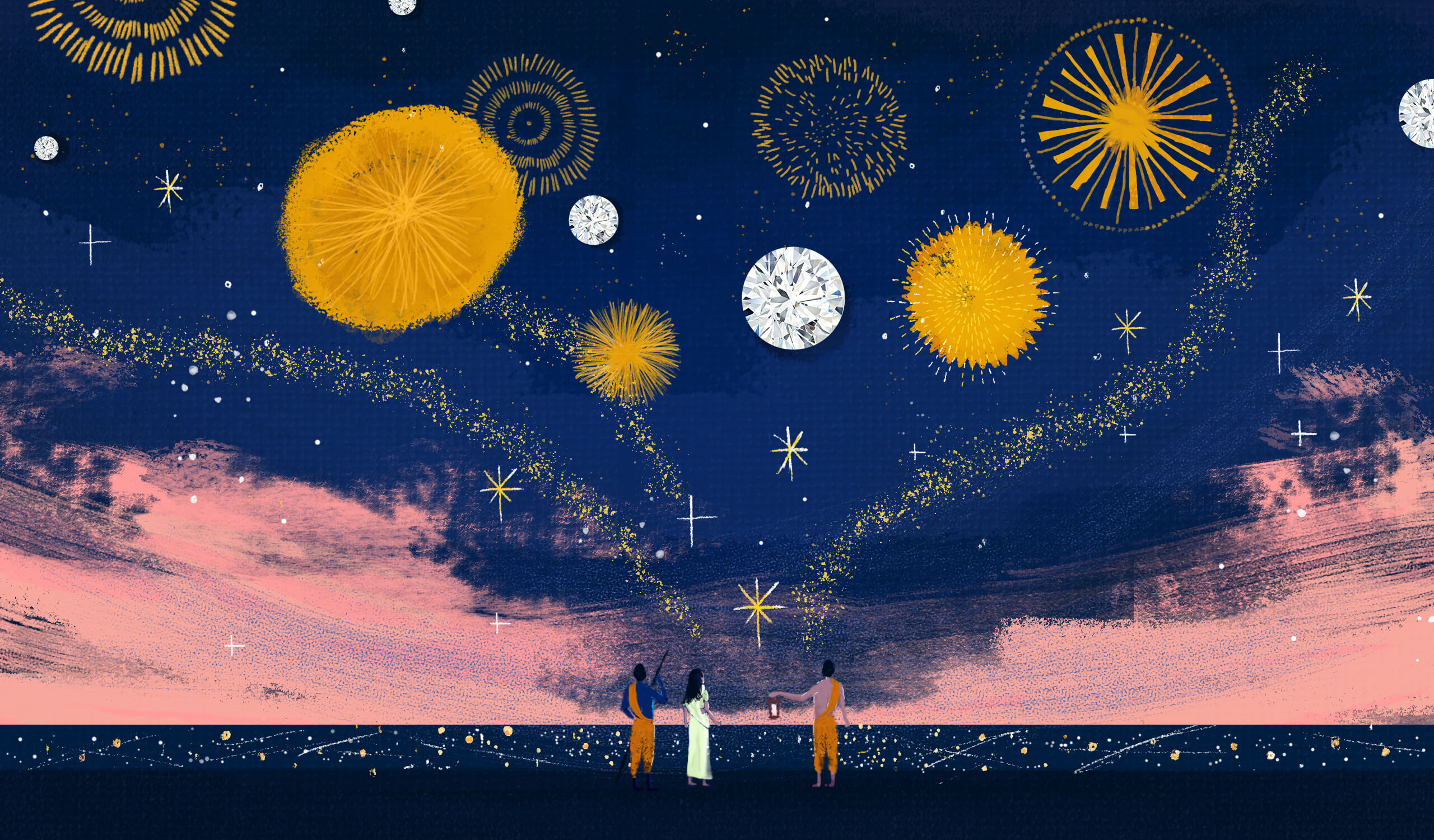
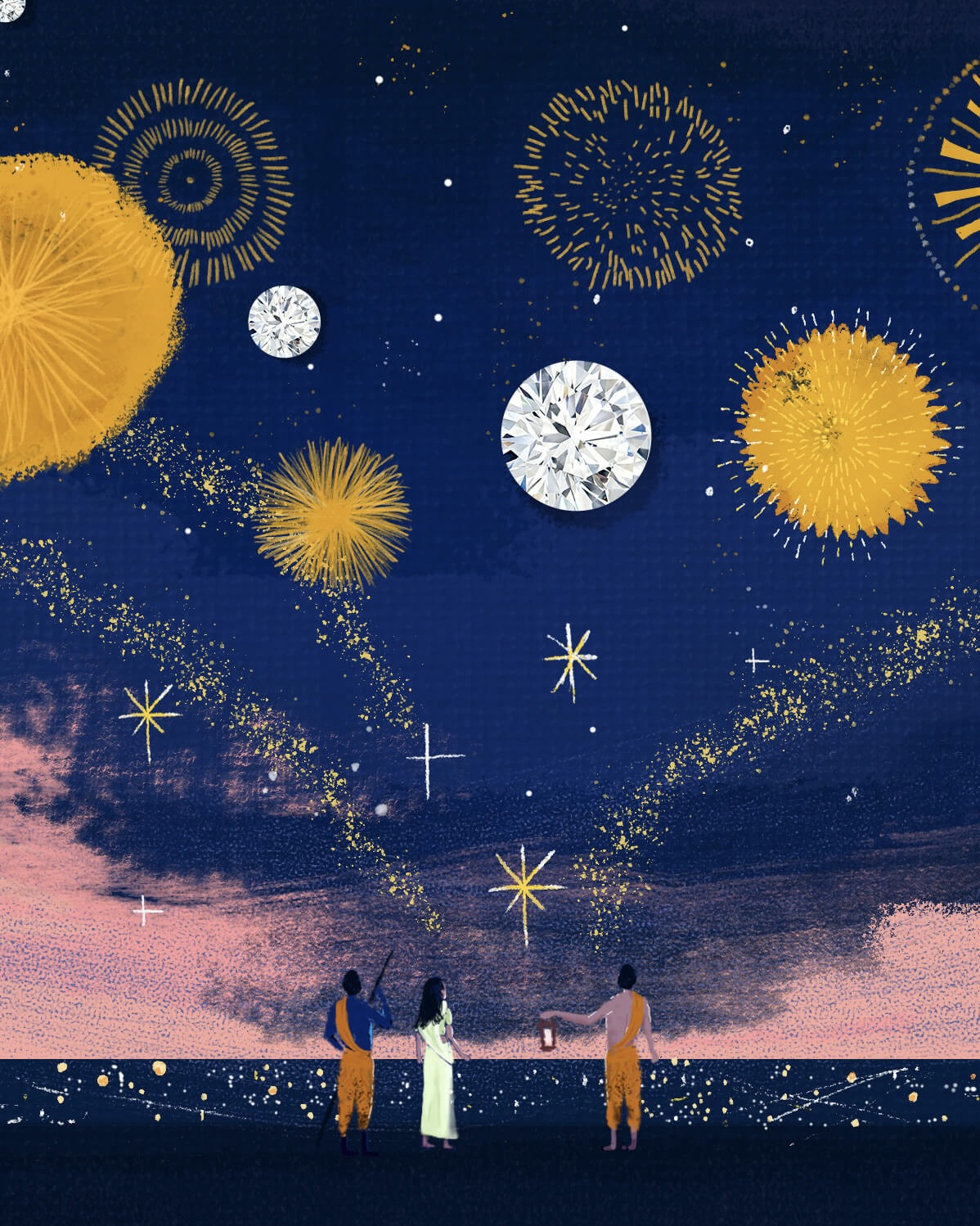
Diwali can well claim to be the diamond of festivals – the dazzle, the brilliance, the hope of new and fortuitous. Is it not unsurprising that diamonds and Diwali go hand in hand? Both of them, through culture and traditions, are a celebration of glimmer and glitter, radiating love and light, purity and prosperity, illuminating the season, our lives and the festivities on the darkest night of the Amavasya.
Lights are at the very heart of the history of Diwali – the day of Lord Rama’s homecoming. The people of Ayodhya laid down a majestic end to their fourteen-year long wait, by filling the pitch dark night sky with the glow of lighted lamps and thousands of diyas arranged in rows all over the land of the kingdom. It is only fitting to then entitle Diwali, the Festival of Lights. History lends each of the five days, Dhanteras, Chhoti Diwali, Lakshmi Puja, Govardhan Puja and Bhai Dooj, their very own significance.
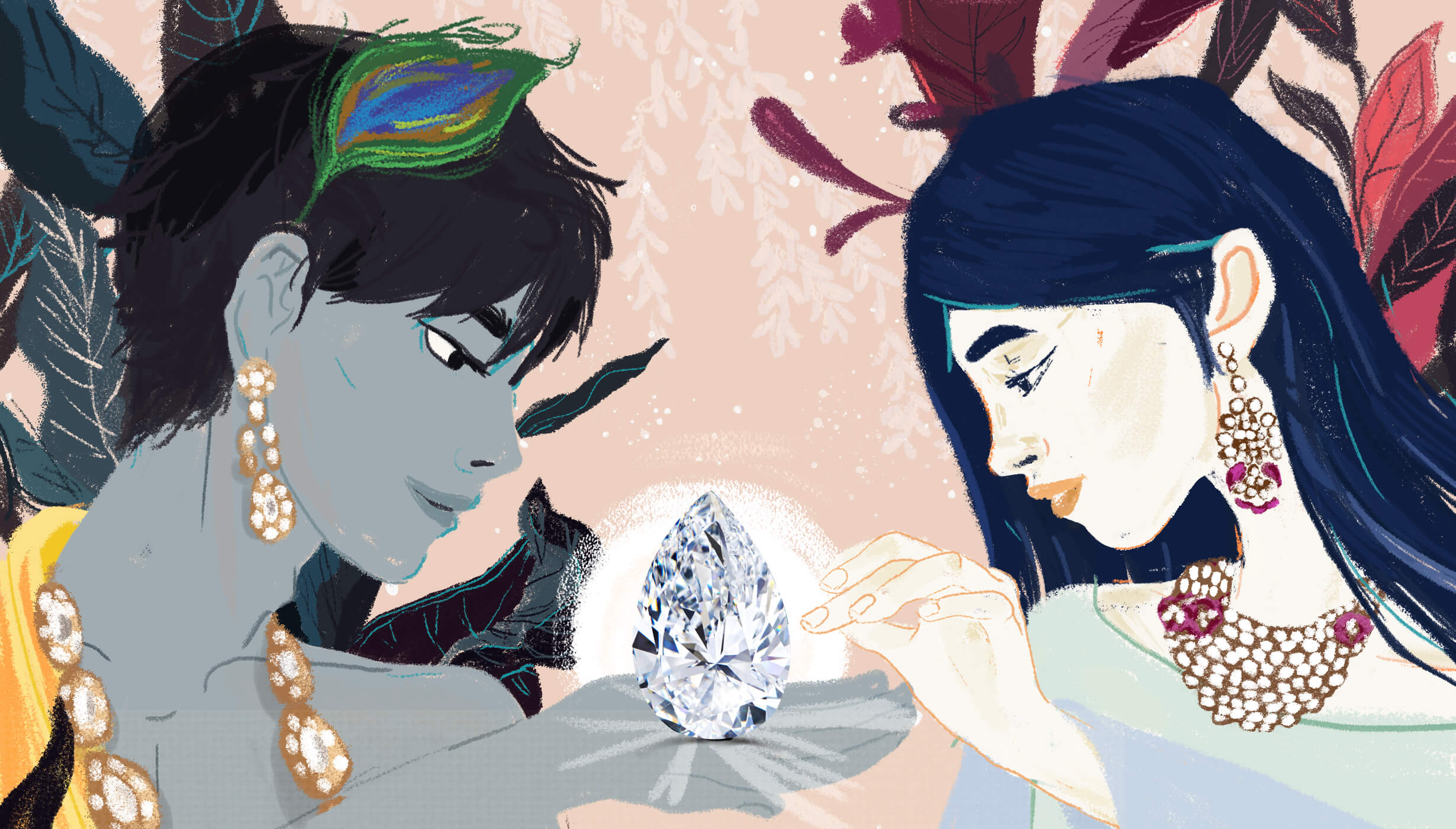
The Sparkling Genesis of a Historical Partnership
What is it that makes epic diamonds so inextricably a part of Diwali? Interestingly, the story of diamonds and Diwali go a long way back and begins with the exciting chase for the mysterious Symantaka diamond, the most beautiful and powerful of all gems. It was this diamond that brought Lord Krishna and his wife Satyabhama together after an arduous battle for the precious diamond. Lord Krishna retrieved it after many battles and returned it eventually to the grateful owner, Shatrajit who gave his beautiful daughter Satyabhama in marriage to Krishna. While the Symantaka diamond married Krishna with Satyabhama, the couple found themselves embroiled in another dramatic episode, connecting them to another set of diamonds, when together, they retrieved it and vanquished the demon Narakasura on Diwali day.
The Origins of Chhoti (small) Diwali : Paved with Diamonds, War and Love
Chhoti Diwali is the day that reminisces the glorious defeat of Narakasura – the ultimate triumph of good over evil and grace over greed. The love story of Lord Krishna and Satyabhama leads several years later to the scintillating tale of Naraka Chaturdashi or Chhoti Diwali, the second day of the five day long Diwali festival. This is the day the demon Narakasura, was killed by none other than the fiery Satyabhama with help from Krishna. Assuming invincibility because of the boon by Lord Brahma, that he could only be killed by his ‘mother’ Bhumidevi, Narakasura attacked and conquered the three worlds. Defeating Indra, the King of Gods, he plundered Devlok* and unceremoniously stole the heavenly diamond earrings of Goddess Aditi, the Mother of the Devas: precious jewels so brilliant that they glowed even in the dark.
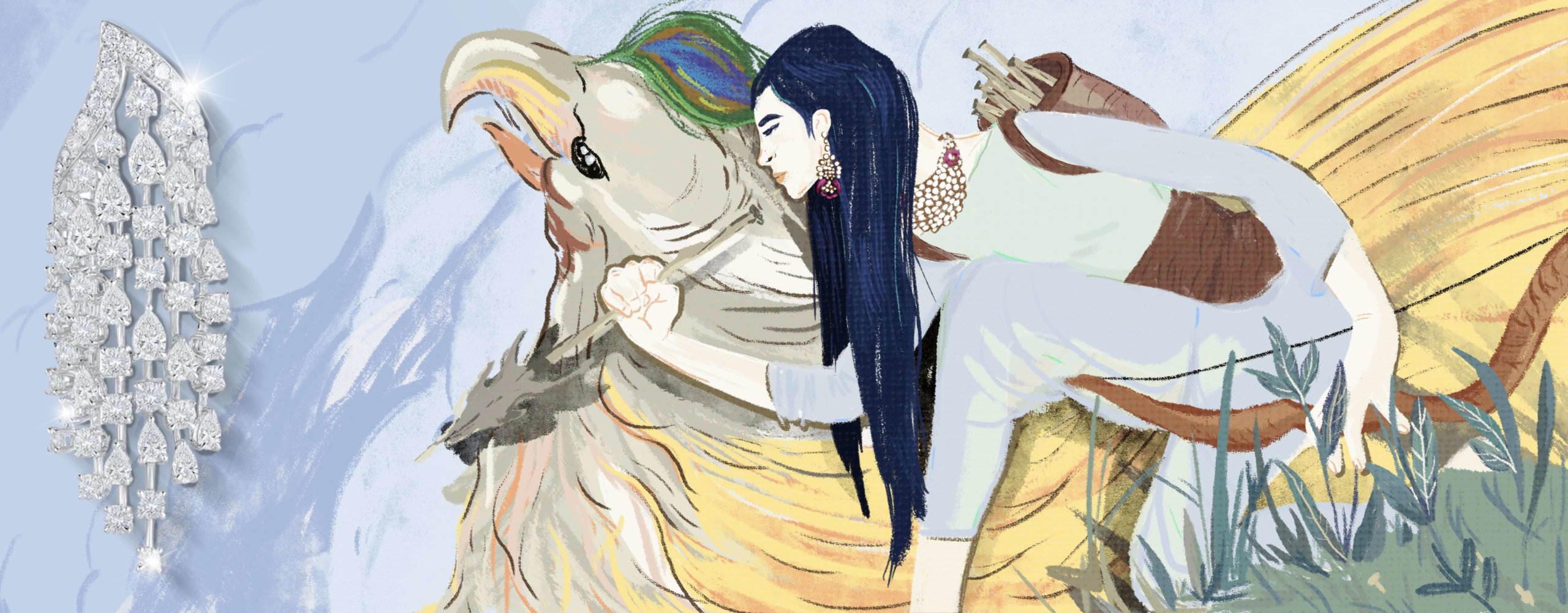
Aditi rushed to Satyabhama for help. Satyabhama took matters into her own hands and sought Krishna’s aid to attack the Asura king. Krishna, aware of Narakasura’s boon and knowing that his wife was an avatar of Bhumidevi, decided to help Satyabhama as her charioteer in her battle against the Demon King. Symbolising the ultimate partnership of a couple in both love and war, they together defeated him in a long drawn war, recovering the stolen diamond earrings and releasing the princesses held captive by Narakasura.
Besides the victory of good over evil, this story illuminates the strength of love through something as rare and beautiful as a real diamond: the perfect partnership.
Rituals Celebrating Love and Light
Diamonds have remained the epitome of beauty and grace, purity and strength since time immemorial and continue to extend their exuberance to the spirit of Diwali today.
The five day festival of lights begins with Dhanteras** the day when people light diyas – to drive away the darkness of Amavasya ‘the new moon day’ on which Diwali is observed every year, making it sacred and auspicious with its underlying significance of light banishing the forces of darkness. There is a timeless tradition that comes packed with the festivities on the auspicious day of Dhanteras – purchasing gold and offering prayers to Goddess Lakshmi to invoke her blessings.
Today, the ritual has evolved to include gifting gold and diamond jewellery as a token of love to those closest to you. The tradition has been followed not only to welcome prosperity and joy to one’s life but also as a way to fend off bad omens and negativity.
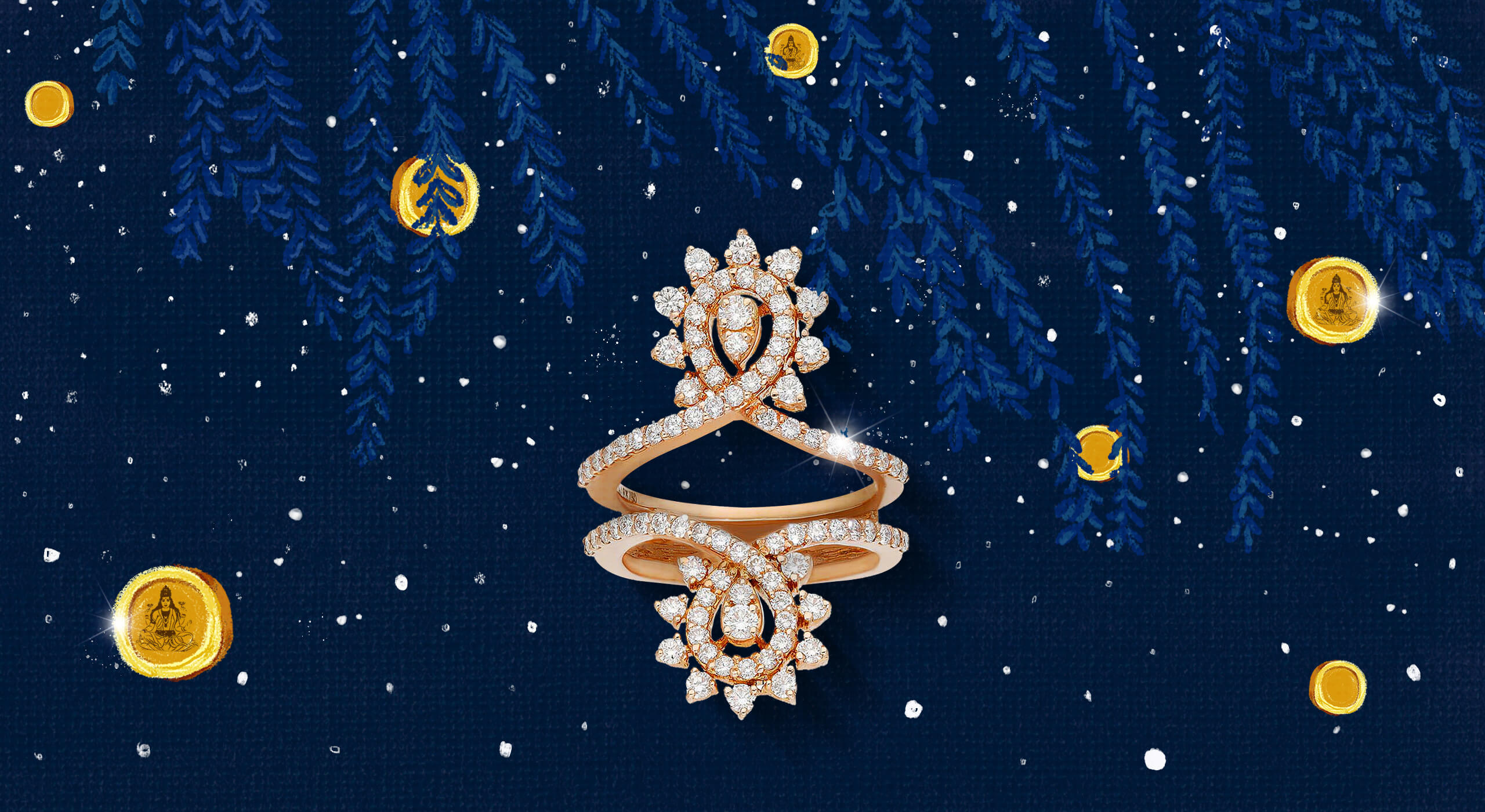
Diwali, diyas, gold and diamonds together usher in big bling time. The festival offers multiple occasions of dressing up through the five days to don your gems and diamond jewellery in your traditional best. As dispelled by the flickering diyas: or the flashing natural diamonds, their sparkle and light ushers in fresh hope and good fortune. Probably why, unlike other Amavasyas, this day is believed to be more auspicious to begin new ventures or buy new valuables.
A diamond for love, a diamond for celebration: diamonds have been reflecting everlasting love and triumphing light over darkness for thousands of years, making the gem a symbol of hope and wonder throughout history.
*Devlok – a realm of eternal light and goodness where the gods exist.
**Dhanteras – The thirteenth lunar day in the Hindu calendar month of Kartik – the first of the five days of the Diwali celebration. ‘Dhan’ means wealth and ‘teras’ means thirteen.



